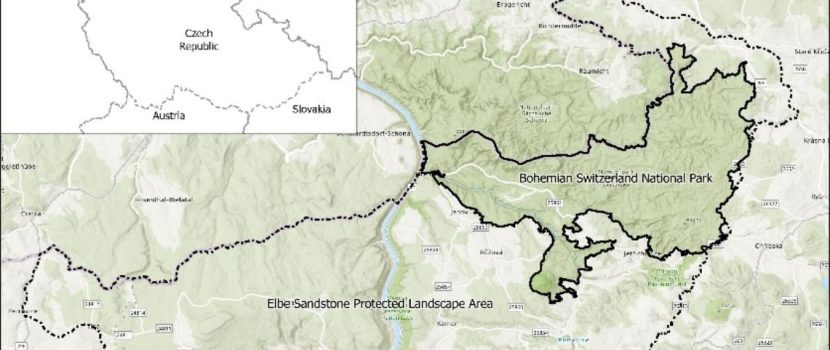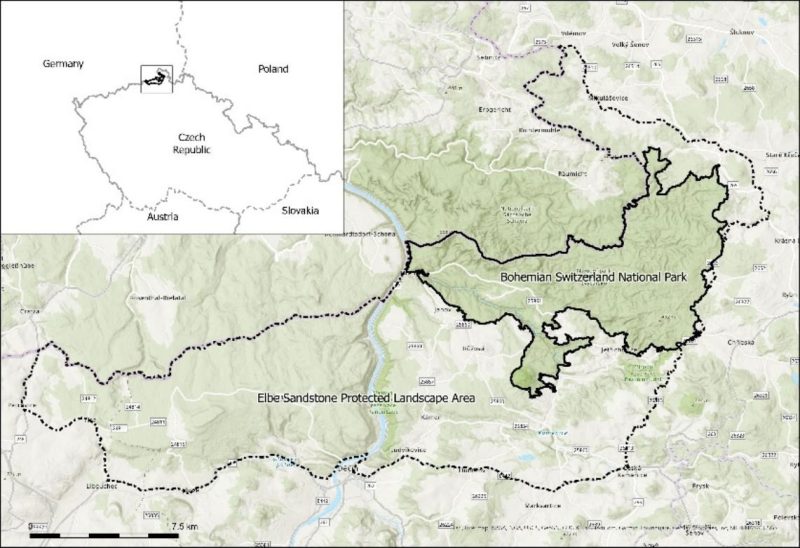
Cooling the land surface: Ecosystem health and water availability drive the landscape capacity to mitigate climate change
Land surface temperature (LST) is profoundly interlinked with the landscape state, settings and functioning, with the connections being very complex. Although the role of wetlands and (semi)natural habitats, in mitigating climate extremes is generally understood, the mechanisms explaining the thermal patterns in complex landscapes remain unclear. We address this knowledge gap, investigating a link between the dynamics of LST and characteristics of a diverse sandstone landscape, focusing on the role of water features and forest health in alleviating temperature extremes. For our study, we used a model example of a sandstone protected area in the north of the Czech Republic that underwent significant changes during the last decade due to a bark beetle infestation and a consequent forest die-off and wildfire. LST data were obtained from MODIS and Landsat 8 sensors in a cloud-based Google Earth Engine platform. Machine learning regression model enabled us to assess complex multivariable relationships and increase the LST spatial resolution. The results suggest the significant effect of both water availability and ecosystem health on LST, with vegetation indices, land cover and elevation being the main factors. The correlation of the satellite-based LST and in situ measured temperature depended on the canopy cover. The study indicates that in complex landscapes, LST data of high spatial and temporal resolution is necessary to disentangle local patterns and environmental drivers. Satellite data can serve as a reliable means to understand the mechanisms and prepare adaptive management measures to make the landscape more resistant to climate change related threats.
Reference:
MÜLLEROVÁ, Jana a ŠIFFEL, Erik. Cooling the land surface: Ecosystem health and water availability drive the landscape capacity to mitigate climate change. Online. Ecological Indicators. 2025, roč. 172. ISSN 1470160X. Available at: https://doi.org/10.1016/j.ecolind.2025.113265.
The archive of other published articles can be found here
